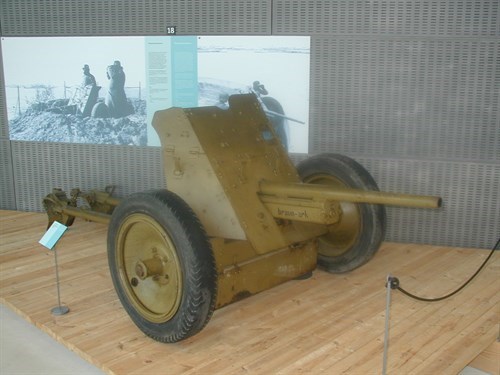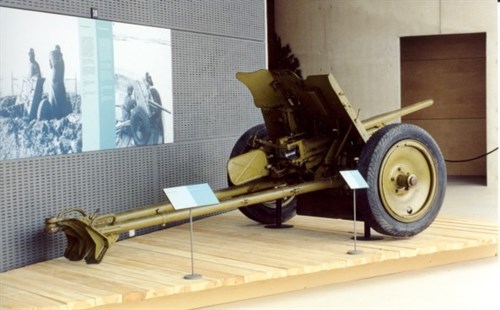3,7 cm anti-tank gun, Pak 35/36

Anti-tank gun introduced into the German Army in 1934, this weapon served as the standard anti-tank gun at the outbreak of the war. As early as the battles in France, it proved to be ineffective against the heavy French and British tanks. A year later, it was used against even heavier Russian tanks in the attack on the Soviet Union. The gun?s lack of penetrating ability helped win it the nickname ?Heeres Anklopfgerät? ? ?the tank door knocker?. For this reason, production was halted in 1941, and the guns were gradually transferred to reserve units.
The Pak 35/36 was the second most common German anti-tank gun in Denmark in May 1945 ? the most common was a Russian copy with a calibre of 4.5 cm.
The Pak 35/36 was revived, however, with the introduction of the Stielgranate 41, a hollow-charge grenade that could fit the gun?s barrel. This grenade could penetrate the armouring of any enemy tank; it therefore remained effective until the end of the war. However, both the reach and the precision were limited.

This gun was produced at the Skoda factories in Czechoslovakia in 1941. The gun has been lended out by Tøjhusmuseet (Royal Armories), Copenhagen.


